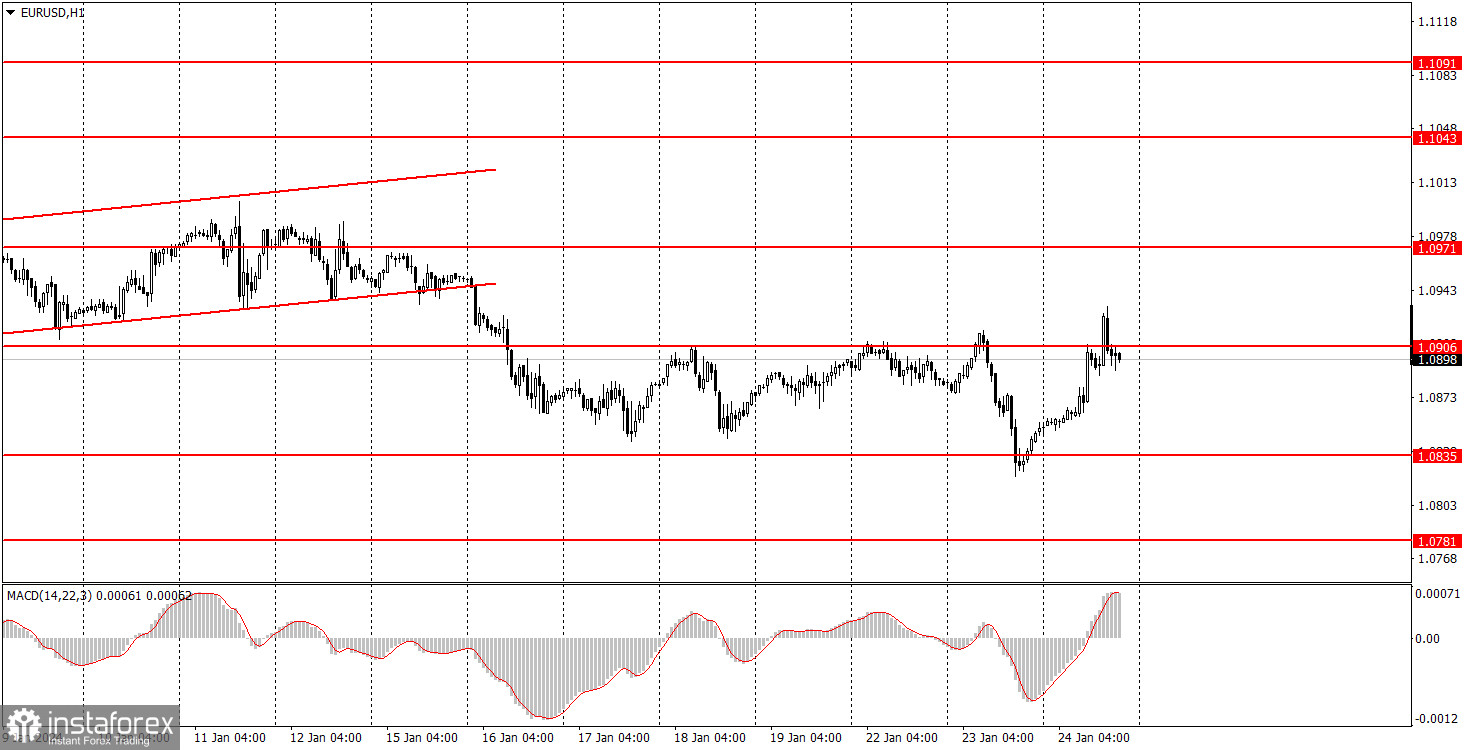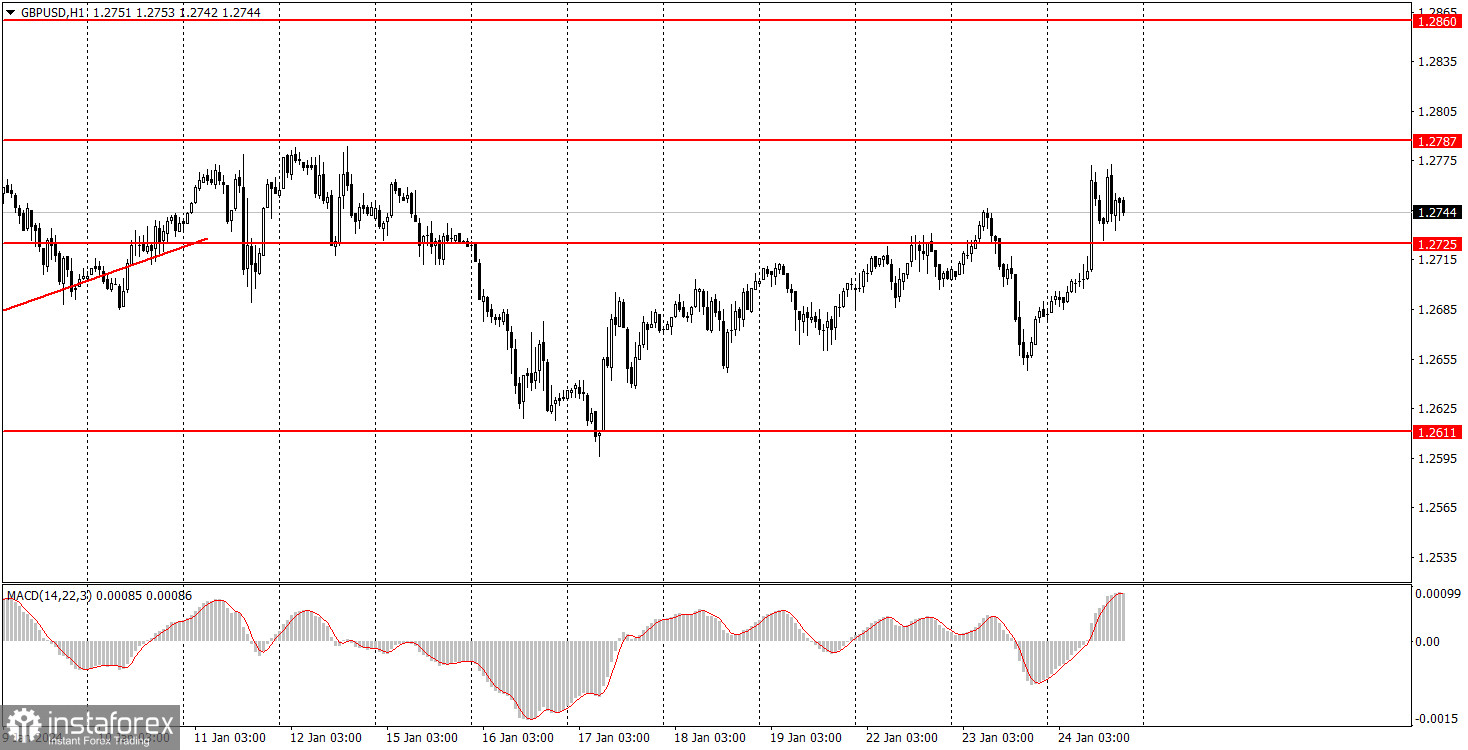Analysis of macroeconomic reports:

There are few macroeconomic events on Thursday, but some of them are crucial. At least we hope that they will provide support for the US dollar if they surpass expectations. Unfortunately, we can see that the market is reluctant to buy the greenback, even when it has reasons to purchase. The Q4 flash GDP growth rate will be in the spotlight on Thursday, along with the Durable Goods Orders. Forecasts for both are relatively low, and actual values could turn out to be higher.
No significant events are scheduled in the UK, the EU, and Germany, but the European Central Bank is scheduled to hold its first monetary policy meeting of this year, which could also have a significant impact on the movement of both currency pairs.
Analysis of fundamental events:
Among the fundamental events of Thursday, we can highlight the speech of ECB President Christine Lagarde after the central bank's meeting. This speech could be the most important event of the day, overshadowing all others. Market participants do not expect any changes in monetary policy, but Lagarde may hint or openly state when the central bank will be ready to lower its interest rate. On the other hand, she could announce that the central bank is not planning a rate cut in the near future (or until a certain time). In any case, the market could react very strongly to this information.
General conclusion:
On Thursday, you should focus on Lagarde's speech. While US GDP and durable goods reports are also important, the ECB meeting takes precedence. It's possible that both currency pairs may change direction several times during the day, so when opening any trades, keep in mind that reversals can be abrupt and significant.
Basic rules of a trading system:
1) Signal strength is determined by the time taken for its formation (either a bounce or level breach). A shorter formation time indicates a stronger signal.
2) If two or more trades around a certain level are initiated based on false signals, subsequent signals from that level should be disregarded.
3) In a flat market, any currency pair can produce multiple false signals or none at all. In any case, the flat trend is not the best condition for trading.
4) Trading activities are confined between the onset of the European session and mid-way through the U.S. session, after which all open trades should be manually closed.
5) On the 30-minute timeframe, trades based on MACD signals are only advisable amidst substantial volatility and an established trend, confirmed either by a trendline or trend channel.
6) If two levels lie closely together (ranging from 5 to 15 pips apart), they should be considered as a support or resistance zone.
How to read charts:
Support and Resistance price levels can serve as targets when buying or selling. You can place Take Profit levels near them.
Red lines represent channels or trend lines, depicting the current market trend and indicating the preferable trading direction.
The MACD(14,22,3) indicator, encompassing both the histogram and signal line, acts as an auxiliary tool and can also be used as a signal source.
Significant speeches and reports (always noted in the news calendar) can profoundly influence the price dynamics. Hence, trading during their release calls for heightened caution. It may be reasonable to exit the market to prevent abrupt price reversals against the prevailing trend.
Beginners should always remember that not every trade will yield profit. Establishing a clear strategy coupled with sound money management is the cornerstone of sustained trading success.
 English
English 
 Русский
Русский Bahasa Indonesia
Bahasa Indonesia Bahasa Malay
Bahasa Malay ไทย
ไทย Español
Español Deutsch
Deutsch Български
Български Français
Français Tiếng Việt
Tiếng Việt 中文
中文 বাংলা
বাংলা हिन्दी
हिन्दी Čeština
Čeština Українська
Українська Română
Română


